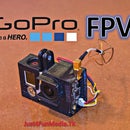Introduction: Fool Your "Smart" Phone
This is a simple project to learn about and play with "Capacitive Touch". Modern touchscreens use this technology to detect your finger by detecting electromagnetic fields. More precisely your body's electromagnetic pulses.
By simulating these pulses using a controller and using carbon fiber to simulate a finger we are able to "trick" capacititve touchscreens and can automate processes such as taking photos.
For this tutorial you will require:
- A microcontroller (I used a MediaTek LinkIt)
- Two long jumper wires
- A touchscreen stylus (Lean how to build you own HERE: https://www.instructables.com/id/Carbon-Fibre-Stylus/)
A huge thank you to Instructables, AutoDesk, MediaTek, and Penolopy Bulnick for sending me the Link It One used in this instructable.
Check Out Our Other Accounts! Like, Subscribe, and Follow to keep up to date with our latest projects. :-)
Step 1: Wiring
The wiring for this project is extremely simple. Run a wire from digital pin 13 (aka the LED Driver Pin) to the stylus, and the second wire from the stylus to the digital ground pin. You are now ready to start testing it out.
Step 2: Testing
To use this project simply supply a digital signal to the output pin when you want the stylus to be able to activate the touch screen.
NOTE: Make sure not to touch the carbon fiber when you are using the stylus otherwise it will conduct your own electrical signals to the screen.
I used the Arduino IDE example code "Blink" to take a series of photos. You can also repeatedly type the same letter or send a multitude of blank texts.
Make sure to post any questions or completed projects in the comments.
Have a great day! :-)

Participated in the
Arduino All The Things! Contest



















